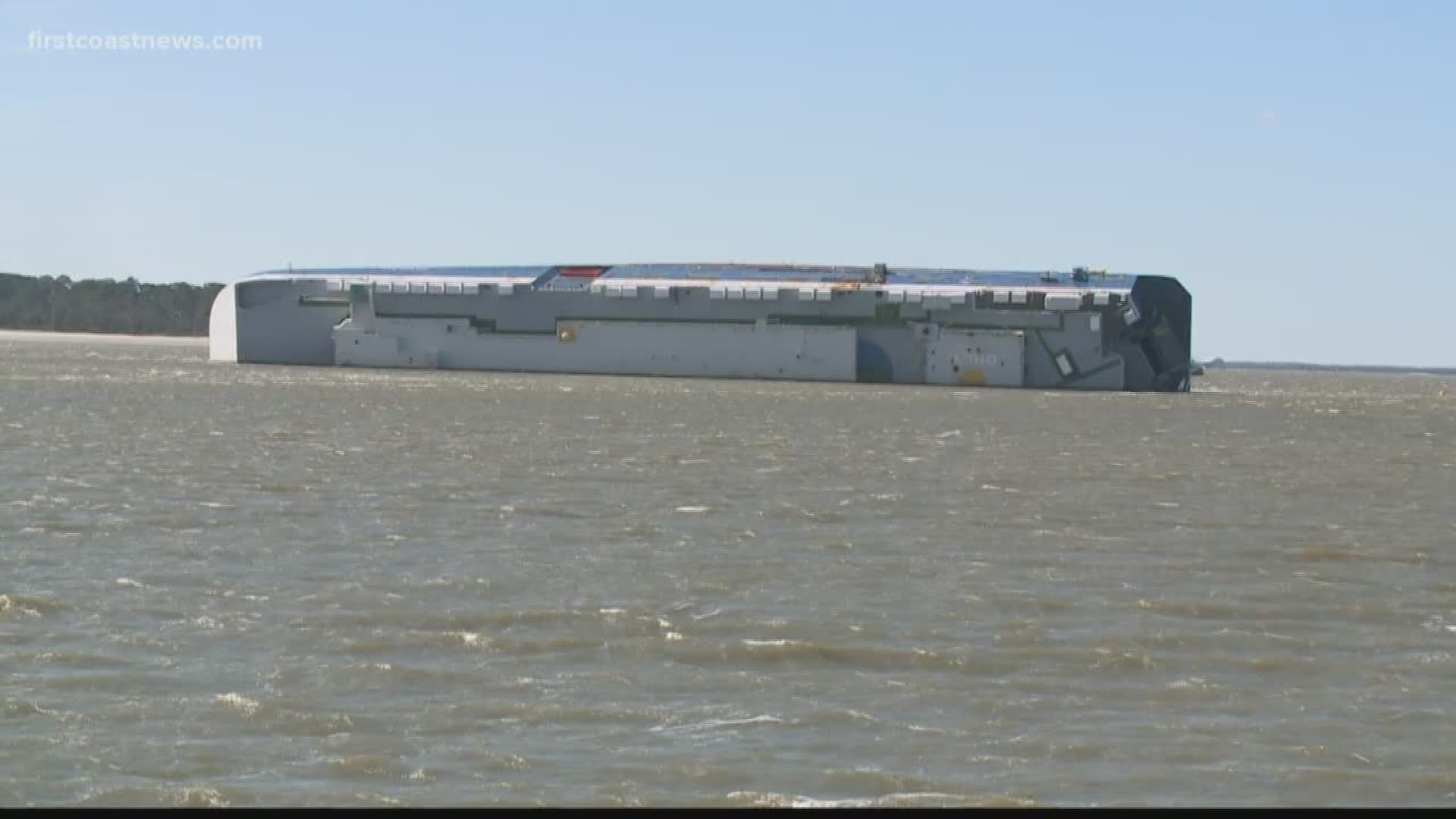The area around the Golden Ray will start sounding like a construction site. That’s what the Unified Command for the Golden Ray response said Friday morning.
Construction of a protective barrier around the ship will start in the next few weeks and could finish by mid-March.
The plan is to cut the Golden Ray into multiple pieces, load each one on a barge and take them away. If you live in the area you may hear some of the construction for this project. One resident says he’s ready to see the ship taken away.
Jim Renner lives six blocks from the St. Simons Island pier. He says the environment around the ship is important to him.
“Georgia’s coastal marshlands and waterways are some of the cleanest coastal areas on the east coast and we need to protect them,” Renner said.
That’s also a priority for salvage teams.
T&T Salvage says building the environmental protective barrier will start mid-February.
It will include a large mesh net to catch debris, including any cars or pieces of the ship.
The groups will also use sonar monitoring to watch for issues with the net or with wildlife.
Salvage companies say building the barrier will sound like loud hammering during the daytime.
The U.S. Coast Guard says this plan had the least amount of impact to the area, and that multiple plans were reviewed before deciding on cutting the ship into pieces.
“Timing was a huge factor, we’re in an area prone to impacts by hurricanes, we’re trying to get the most of it out by the height of hurricane season,” Commander Norm Witt with the U.S. Coast Guard said.
The cutting of each piece of the ship could take 24 hours. A large chain-like saw will cut the ship from the seafloor to the starboard side of the ship.
Salvage teams say it will require working through the night.
Renner is not excited about the level of noise but wants the shipwreck gone.
“They’ve got what appears to be a good contractor, a good plan and a reasonable timeline so I’m encouraged,’ he said.
Officials say that there will be 50 to 70 piles placed around the ship and that pile driving will only take place during daytime hours.
Significant delays are not expected for traffic to the Port of Brunswick.
According to Doug Haymans with the Georgia Department of Natural Resources, water and air monitoring will not be increased while the salvage is ongoing.
Haymans said that there are no reports of oil in the water, although environmental groups claim that oiling has been spotted on over 30 miles of the shoreline in Georgia.
“Since the beginning of the wreck, sediment samples show no levels of oil in the water, we feel fairly confident of those results and the monitoring is ongoing,” Haymans said.
The Unified Command has documented releases of oil but has not said how much has leaked.
380,000 gallons of oil were removed from the ship, but some officials say there is some oil unaccounted for.

